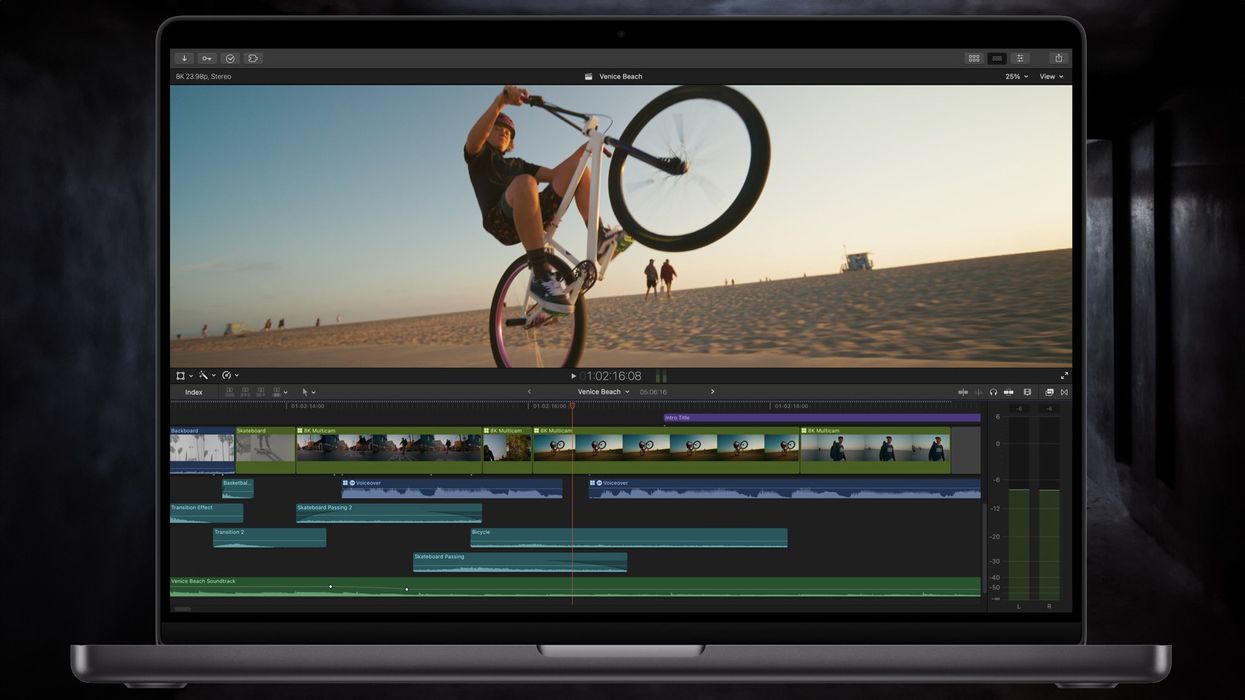Final Cut Pro 10.7—All the Latest Features You Need to Know
Is this latest version of FCP close to the best the app has ever been?

Final Cut Pro 10.7
To many creatives, Apple Final Cut Pro is an enigma. If you ask anyone who’s been in film and video for over a decade or so, they’ll tell you that Final Cut used to be the best, but it fell over its own feet trying to become too simple—and so the industry shifted to Premiere Pro.
However, that doesn’t tell the whole story. And in truth, it’s kind of wrong, simply because Final Cut Pro has always remained popular. It’s just not talked about the same way as it once was, though.
Yet, the fact remains that tons of people never left Final Cut Pro every day.
So, regardless of your old (or new) thoughts about this legacy NLE, let’s take a look at its most recent update and explore how its latest features—including a scrolling timeline, an improved object tracker and multi-engine export—are making FCP, dare we say, relevant again.
The Scrolling Timeline
One of the most iconic features of Final Cut Pro over the years has been its timeline and its unique timeline-based editing features. With Final Cut Pro 10.7, the scrolling timeline works by moving under the playhead. It’s a great feature to help keep your active clips right in front of your eyes.
This scrolling timeline also allows for more control of the overall view as it's easier to move forward or backward in the timeline as well. Plus, with the jump forward and stop playback hotkeys, you can work much more quickly, and it's truly one of the more intuitive NLEs on the market.
Improved Object Tracking Feature
The latest version of Final Cut Pro also features a new and improved Object Track feature that makes use of Apple’s machine learning capabilities. This object-tracking tool does a great job of tracking subjects in your clips, even if they’re potentially obscured or fall out of frame for a bit.
It’s not any revolutionary feature by any means, as many cameras and other editors have this tool, but with Apple Silicon Macs specifically, this feature has been majorly enhanced and should work as well—if not better— than other software or platforms.
Multi-Engine Export and Other Features
Finally, while there are dozens of updates that have come to Final Cut Pro with these last few versions, including better organizational tools, video role controls, and of course new features specifically for Final Cut Pro on iPad, one of the best new features has to be the improvements Apple has made to its H.264 and HEVC exports.
Thanks in part to the new M-series chips at work, all available media engines in macOS Sonoma and later are able to export faster than ever before. In many instances, users should see up to 10% improved export speeds, plus some different options and controls for exporting multiple intermediate files at once.
Here's a full list of updates for Final Cut Pro 10.7:
- Automatically scroll the timeline to keep your clips in view under the playhead during playback.
- Increase editing efficiency by combining a selected group of connected clips into a connected storyline.
- View both video and audio role colors to easily see the organization of the timeline at a glance.
- See improved results when using the Object Tracker’s all-new machine-learning model to analyze the movement of faces and other objects on Mac computers with Apple silicon.
- Use the enhanced Reveal in Browser feature to easily locate a clip in the browser without losing your selected Keyword Collection or Smart Collection.
- Export HEVC and H.264 files faster by simultaneously processing video segments across available media engines (requires macOS Sonoma or later and a Mac with Apple M1 Max, M1 Ultra, M2 Max, M2 Ultra, or M3 Max).
- Fixes an issue that caused an offline media badge to remain on an event after reconnecting.
- Fixes an issue that could cause video to be cropped in the Multicam angle editor.
- Improves performance when upgrading a library that contains many markers.
- Looking for a More Filmic Way to Tell a Digital Love Story? '10,000 KM' is a Great Case Study ›
- Dual Pixel CMOS AutoFocus Upgrade for the Canon C300 is Set for May ›
- ProCutX, an iPad Control App for Final Cut Pro X, is Now Free for a Limited Time ›
- Apple Finally Updates Final Cut Pro X—But Is It Too Late? ›
- Impressive Final Cut Pro Updates Are Here To Compete With Premiere | No Film School ›











